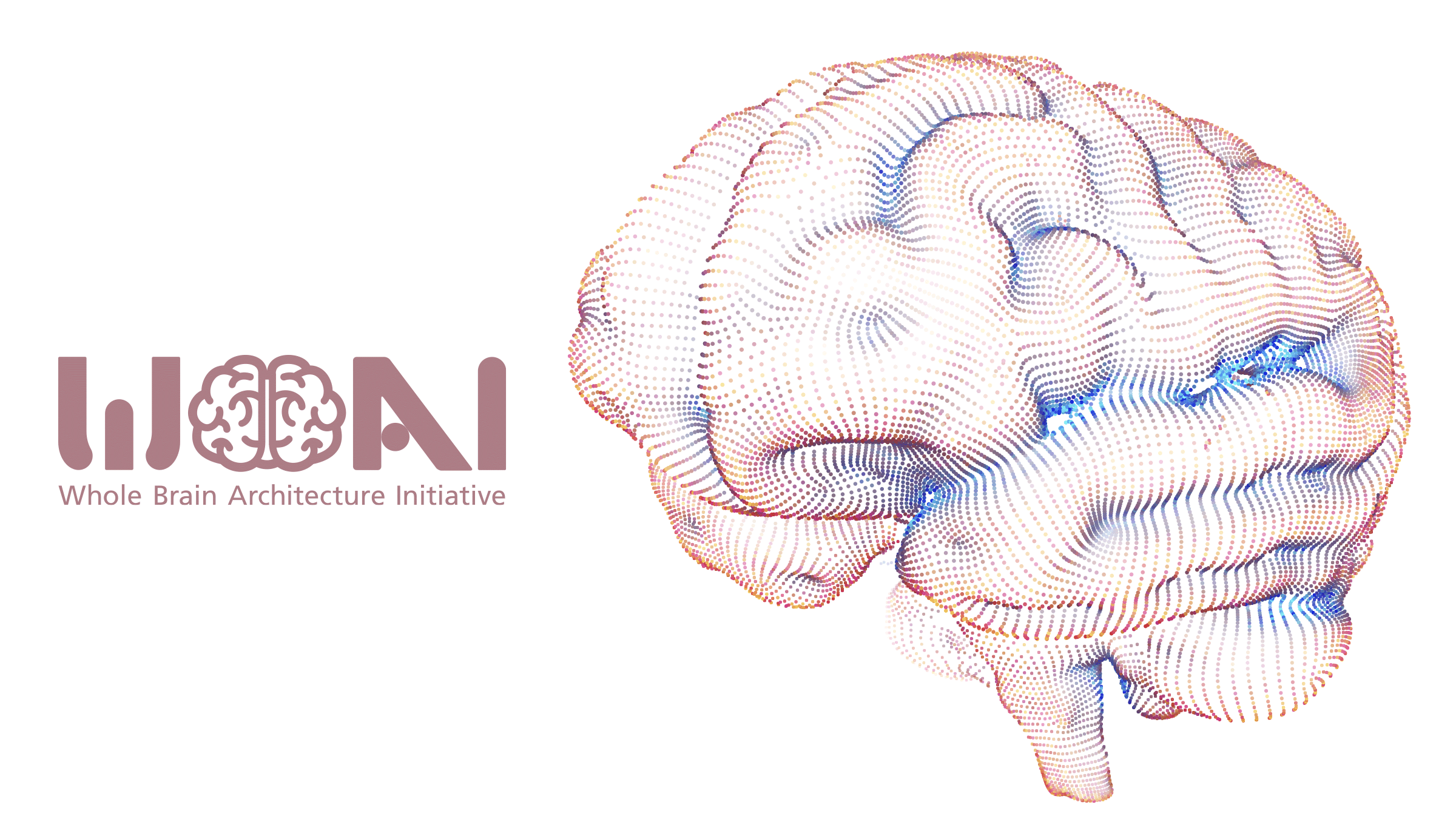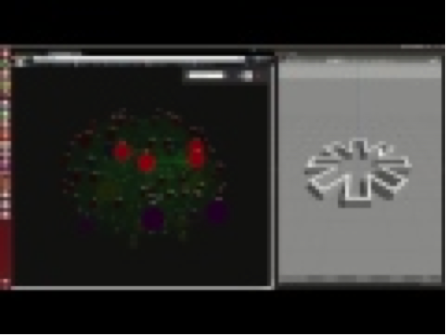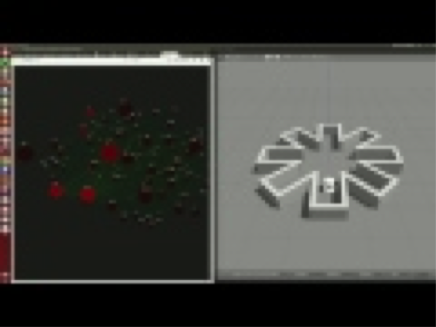Overview
The Whole Brain Architecture Initiative (WBAI) is working on the realization of cognitive architecture grounded on the brain. To help this activity, DWANGO Artificial Intelligence Laboratory has developed BiCAmon (Biologically inspired Cognitive Architecture monitor), a monitoring tool that visualizes the dynamic activity of cognitive architecture by mapping it on connectome (network in the brain) in 3D.
Technological background
The idea to use the knowledge of neuroscience in the study of artificial intelligence is not new. For example, there was an attempt to map the activities of ACT-R cognitive architecture to experimental results with fMRI. Moreover, mesoscopic connectome data being developed as functional maps of the brain has enabled the realistic mapping of cognitive architecture to the brain.
Configuration of BiCAmon
BiCAmon was designed to be easily used with cognitive architectures developed on a variety of computer platforms. BiCAmon communicates with cognitive architecture through network sockets and monitoring is done on generic Web browsers.
Figure 1 shows the configuration of BiCAmon. The cognitive architecture sends out information of its state with an inserted code that calls communication API. The BiCAmon server runs on a Python environment. The script of the BiCAmon client displays the activity on WebGL-enabled browsers.
 Figure 1 BiCAmon system configuration
Figure 1 BiCAmon system configuration
Introduction Video
The following are videos of BiCAmon in action. In these videos, a mesoscopic connectome [1] of mice is used. Coordinates of cortical areas are acquired from the experimental database on ALLEN BRAIN ATLAS via the ALLEN SDK. Nengo [2] was used as the framework of cognitive architecture.
Video 1: Transition of the point of view, node search, etc.
Video 2: Representation of the internal state of the cognitive architecture
controling the (simulated) mobile robot
Major functions
The following are major functions of BiCAmon:
- Basic functions:
- Structure display: 3D display of the position and volume of the nodes corresponding to brain areas and the connection between them.
- Exploration: moving the point of view with pointing devices.
- Monitoring: displaying the activity status of functional units of the cognitive architecture on the associated nodes.
- Keyword search: Nodes can be searched (forward match and repeating search for OR).
- Half mode switching: to switch the hemispherical display on/off by clicking the green button.
The development of the whole brain architecture with BiCAmon
The understanding of the internal state of cognitive architecture will be facilitated by visualization with BiCAmon. More importantly, cognitive architecture will be eventually correlated with the mesoscopic network structure of the brain through the following developmental process:
- Create a primitive cognitive architecture with the sensor/motor/decision-making modules roughly associated with brain parts to display its functional activities on BiCAmon.
- Distributed collaborative development process could go on as follows:
- IT engineers can develop and improve the details of the cognitive architecture, while associating them with specific neuronal circuits in the brain. As it does not require scientific knowledge of engineers, it lowers the entry barriers for IT engineers. Mapping with the brain and its visualization may inspire new ways of information processing.
- Neuroscientists may be helped developing functional hypotheses on neural activities from associated cognitive architecture, carry out experiments with the hypotheses, and create models based on them.
In these processes, BiCAmon would be useful for linking neural activity with the working of cognitive architecture.
We hope that many researchers and engineers will be able to develop brain-inspired cognitive architecture by referring to connectome with BiCAmon and collaborate beyond the boundaries of neuroscience and artificial intelligence.
Publication
The official version of the source code of the program is scheduled to be published by WBAI based on the Apache License v2 at a later date. (For the current version under development at DWANGO can be downloaded from here.)
Developers
Hirokazu Kiyomaru (Doshisha University), Masahiko Osawa (Keio University), Hiroshi Yamakawa (DWANGO Artificial Intelligence Laboratory)
References
- Oh SW, et al.: “A mesoscale connectome of the mouse brain”, Nature (2014) 508, 207-214 doi:. 10.1038, nature13186.
- Eliasmith C.: How to Build a Brain: A Neural Architecture for Biological Cognition. (2013), Oxford Series on Cognitive Models and Architectures.





 Japanese
Japanese